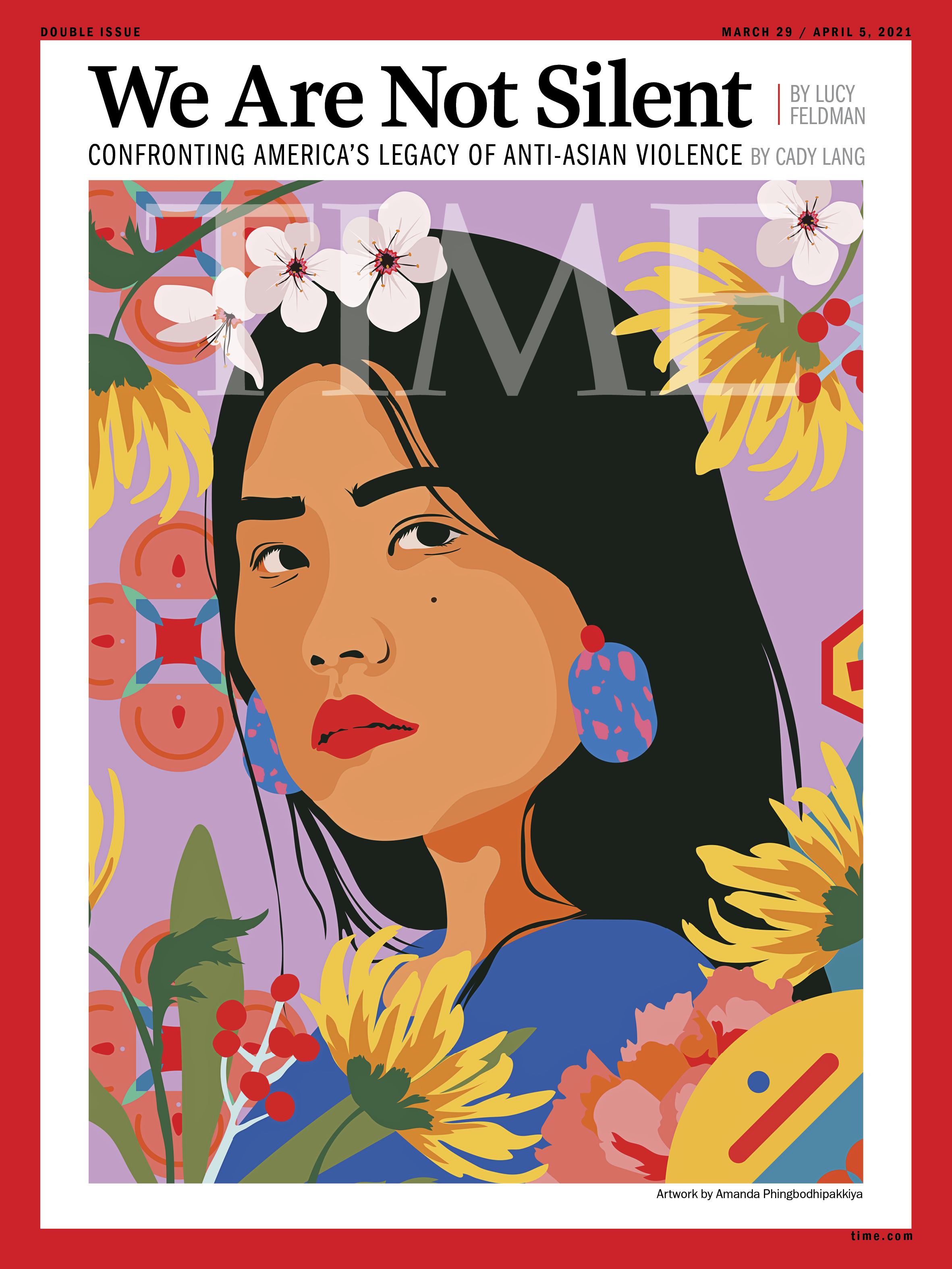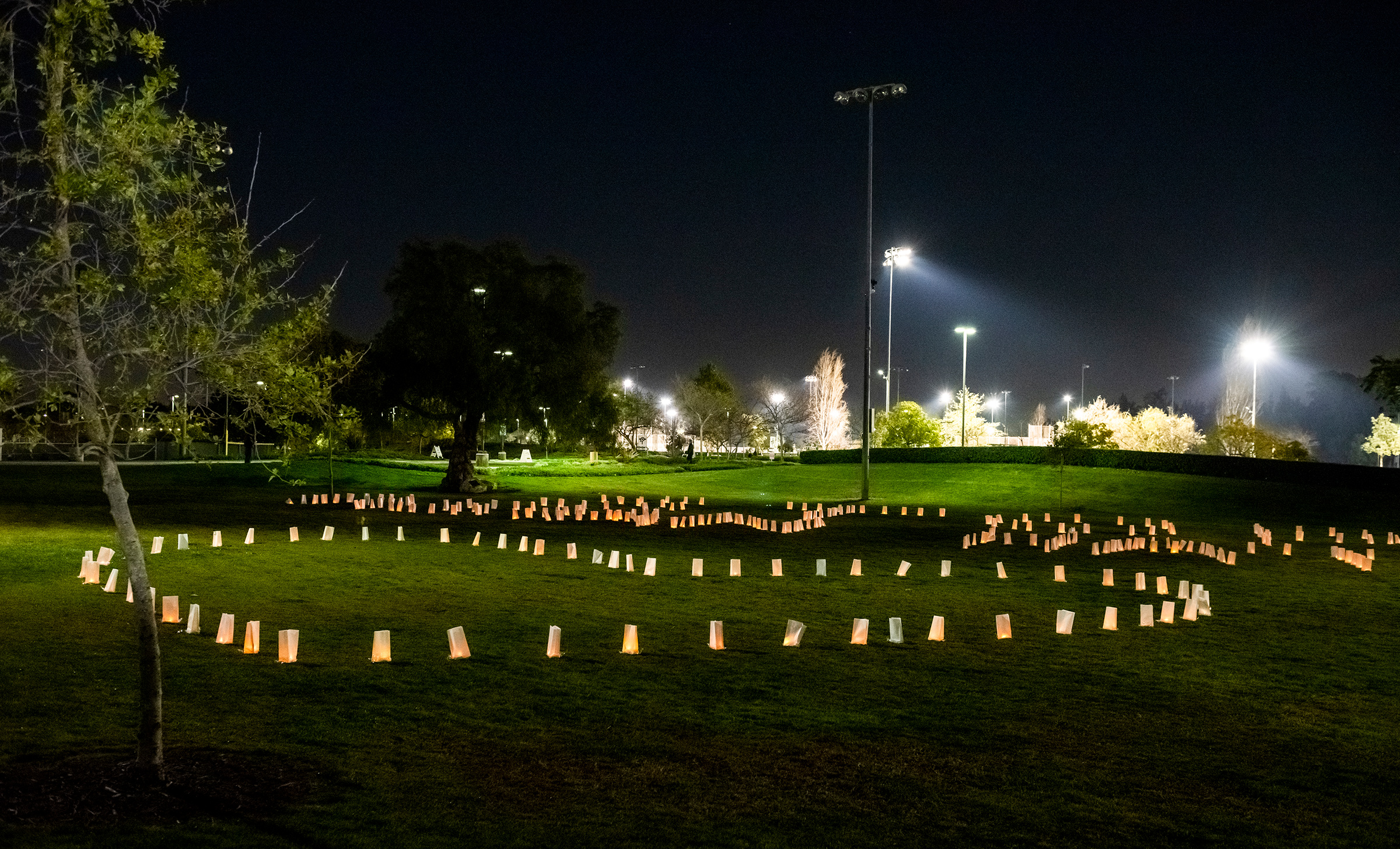It was heartbreaking and horrifying—but to many, it wasn’t a surprise.
The news that eight people, six of them Asian-American women, were killed at businesses in the Atlanta area on March 16 came after a year of intense anti-Asian racism in the U.S. On the platforms where news arrives first, and quickly attaches to feelings, emotions were already raw.
“This mass shooter was targeting Asian women and their businesses. This isn’t an isolated incident. There have been 500+ hate crimes targeted at Asian people this year alone,” social media specialist Mark Kim wrote on Twitter. “This Atlanta tragedy lies at an intersection of race, gender, class and the legacy of America’s history of colonization and violence in Asia,” journalist Elise Hu said on the site. “I don’t have the words. I’m just despondent. Protect Asian women, solidarity with sex workers, #StopAsianHate.”
And as posts went viral, with comments affirming their calls for change, the news kept coming. “Atlanta shooting suspect told investigators that killings of Asian women weren’t racially motivated, police say,” said a Washington Post news alert. A quote from a Daily Beast story described the alleged shooter–who was charged on March 17 with eight counts of murder–as the son of a pastor who was “very innocent seeming.” Meanwhile the victims remained nameless. Later in the day, four were identified: Delaina Ashley Yaun, 33; Paul Andre Michels, 54; Xiaojie Tan, 49; and Daoyou Feng, 44. Additionally, Elcias R. Hernandez-Ortiz, 30, was injured in the attack. (Officials from the Atlanta police department are not naming the other victims until their families are notified.) By the time their names were made public, the suspect would already be accounted for by a member of the Cherokee County sheriff’s office who, in a video that was widely circulated, said: “Yesterday was a really bad day for him and this is what he did.”
In the dissonance was confirmation of what many Asian Americans already knew: the violence that has long targeted their community is rarely seen for what it is. Since the start of the pandemic last spring, Asian Americans have faced racist violence at a much higher rate than in previous years. Stop AAPI Hate, a reporting database created at the beginning of the pandemic as a response to the increase in racial violence, received 3,795 reports of anti-Asian discrimination between March 19, 2020, and Feb. 28, 2021; women reported hate incidents at 2.3 times the rate of men.
After his capture, the police noted that the shooter said he was seeking to address a “sexual addiction” and “was not racially motivated.” But for Asian women, racism and misogyny are deeply intertwined. A 2018 report from the American Psychological Association outlined the ways in which Asian-American women are exoticized and objectified in media and popular culture, depicted as “faceless, quiet and invisible, or as sexual objects.” The survey said these stereotypes “contribute to experiences of marginalization, invisibility and oppression” for Asian-American women. On March 16, America saw that reality manifest in the most brutal way.

From the time the first wave of Chinese immigrants arrived as laborers in the U.S. in the 1850s, Asian Americans have always been subject to racist violence. As a source of cheap labor to build railroads, Asian immigrants came to be seen as threats to white jobs and scapegoated as dirty and disease-ridden. The “yellow peril” ultimately led to the Chinese Exclusion Act of 1882, the first time the U.S. had ever barred a specific ethnic group from the country.
The brutality runs through more than two centuries of U.S. history, from the incarceration camps of World War II, when over 100,000 Japanese Americans were rounded up and imprisoned because of xenophobic fears, to the 1982 murder of Vincent Chin, who died after being beaten by white men in a racially motivated attack in Detroit.
Yet while racial violence has been an undeniable part of the history of Asian Americans in the U.S., the pervasive “model minority” myth has helped to obscure it. That false idea, constructed during the civil rights era to stymie racial-justice movements, suggests that Asian Americans are more successful than other ethnic minorities because of hard work, education and inherently law-abiding natures. Racial-justice educator Bianca Mabute-Louie emphasizes the connection between this damaging stereotype and the violence we’ve seen on the news–videos featuring Asian-American elders shoved to the ground. “This contributes to erasing the very real interpersonal violence that we see happening in these videos, and that Asian Americans experience from the day-to-day, things that don’t get reported and the things that don’t get filmed,” she says.
Because the myth suggests upward mobility, it creates a fallacy that Asian Americans don’t experience struggle or racial discrimination. In reality, the community is America’s most economically divided: a 2018 study by the Pew Research Center found that Asian Americans experience the largest income-inequality gap as an ethnic and racial group in the U.S.
The current surge in anti-Asian hate crimes was exacerbated by the xenophobic rhetoric of former President Donald Trump, who has continued to refer to COVID-19 as “the China virus,” blaming the country for the pandemic. Trump’s choice of words followed a long American history of using diseases to justify anti-Asian xenophobia–one that has helped to shape perception of Asian Americans as “perpetual foreigners.” “There’s a clear correlation between President Trump’s incendiary comments, his insistence on using the term Chinese virus, and the subsequent hate speech spread on social media and the hate violence directed toward us,” says Russell Jeung, a co-founder of Stop AAPI Hate and a professor of Asian American studies at San Francisco State University.
Anti-Asian racism also surged during the pandemic in Britain and Australia, with incidents of discrimination and xenophobia reported last summer by Human Rights Watch in Italy, Russia and Brazil. The news from Atlanta landed hard in Asian communities already feeling extraordinarily vulnerable. “We’re all feeling a collective trauma at the moment,” says Mai-Anh Peterson, co-founder of besea.n (Britain’s East and South East Asian Network). “We know that this isn’t just a problem for North America.”
President Joe Biden has sought to undo the damage wrought by his predecessor. Shortly after taking office in January, he signed an Executive Order denouncing anti-Asian discrimination. During a March 11 speech on the anniversary of the COVID-19 pandemic, he said that hate crimes against Asian Americans are “un-American” and that they “must stop.” Five days later, the gunman started shooting.

The President was not alone. One day before the shootings, Dr. Michelle Au, a state senator of East Asian descent in Georgia, spoke out on the imminent danger faced by the Asian community during the pandemic. “Asian Americans are part of our country’s plurality,” she said. “Recognize that we need help, we need protection, and we need people in power to stand up for us against hate.”
What form that protection takes has been part of a heated debate among Asian Americans, particularly in the wake of a national reckoning over systemic racism and police brutality after the killing of George Floyd in May. During a recent surge in physical violence ahead of Lunar New Year, actors Daniel Dae Kim and Daniel Wu shared on Twitter a video of a 91-year-old man being pushed down in Oakland, Calif., Chinatown. They offered a $25,000 reward to anyone who could provide information about the attacker, who had also pushed down a 60-year-old man as well as a 55-year-old woman, who was left unconscious from the attack.
Kim’s tweet brought up mixed feelings within the AAPI community: his attempt to raise awareness tapped into a longtime grievance of many Asian Americans–that violence against them has often been downplayed or ignored. At the same time, the offer of a reward–particularly in a situation where the alleged attacker was a Black man–underscored the difficulty of tackling anti-Asian violence without relying on law-enforcement institutions that have historically targeted Black and brown communities. (The Oakland police charged 28-year-old Yahya Muslim with assault, battery and elder abuse.) “This looks a lot like a bounty on a Black person funded by Asian-American celebrities,” wrote writer and consultant Kim Tran. “I have major, major doubts.”
Rather than turning to additional policing, community leaders have stressed the importance of grassroots organizing at this time, as well as the need for cross-community solidarity. “We know that this is an issue that affects all our communities, and we have to break the cycle of violence,” says Jeung, the Stop AAPI Hate co-founder.
Additional policing doesn’t pose a threat just to Black and brown communities; people of Asian descent have also suffered disproportionately at the hands of law enforcement. In the aftermath of the March 16 killings, many were reminded of the 2017 death of Yang Song, a massage-parlor worker who fell to her death while trying to escape a police raid in Flushing, Queens: “Don’t tell me increased police presence will save us,” tweeted writer Mia Sato. For activists, stories like Song’s are a reminder of the need to build solidarity across racial, economic and social lines. “Asians with power and visibility should be appalled that white men are targeting our most vulnerable groups–poor, immigrant women,” writer and activist Roslyn Talusan said on Twitter. “Protecting and advocating for Asian sex workers should be the founding pillars of any movement for racial justice in Asian communities.”
Details of the Atlanta crimes are still being gathered. But at ground level, the impact was immediate.”We’re closed today because everybody is afraid,” Grace Wang, manager of a local Atlanta spa, says. “All employees are worried to come to work, and customers too and we decided to close until we find out what happened.”
There are no quick solutions to racial violence. What Biden calls “un-American” is, after all, deeply rooted in American history. Ending anti-Asian racism in the U.S. means confronting centuries of discrimination, violence and oppression, and recognizing how it manifests in the present day. As Au noted in her statements this week, “This is a new chapter in a very old story.” In order to write a new story, we have to acknowledge the ugly past that brought us here.
–With reporting by Suyin Haynes/London and Paulina Cachero, Andrew R. Chow, Leslie Dickstein, Sanya Mansoor, Kat Moon, Simmone Shah and Francesca Trianni/New York
Correction: The original version of this story misspelled the name of one of the victims. It is Xiaojie Tan, not Xiaojie Yan.
More Must-Reads from TIME
- Cybersecurity Experts Are Sounding the Alarm on DOGE
- Meet the 2025 Women of the Year
- The Harsh Truth About Disability Inclusion
- Why Do More Young Adults Have Cancer?
- Colman Domingo Leads With Radical Love
- How to Get Better at Doing Things Alone
- Michelle Zauner Stares Down the Darkness
Write to Cady Lang at cady.lang@timemagazine.com